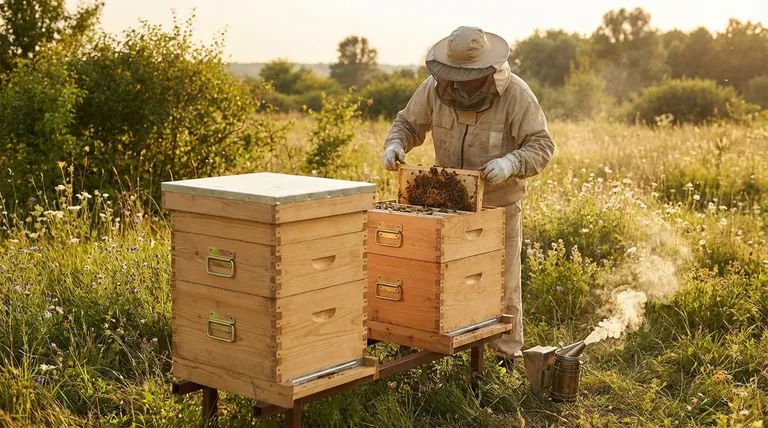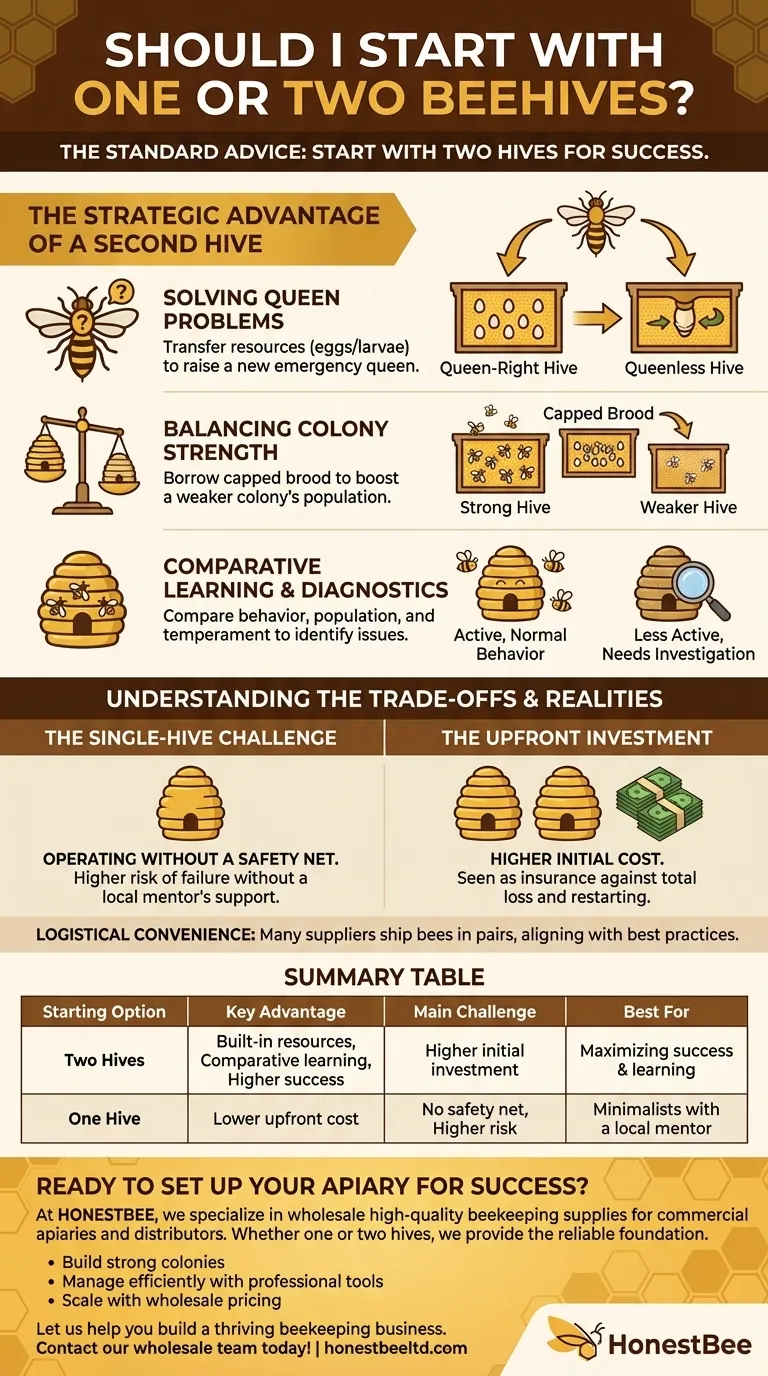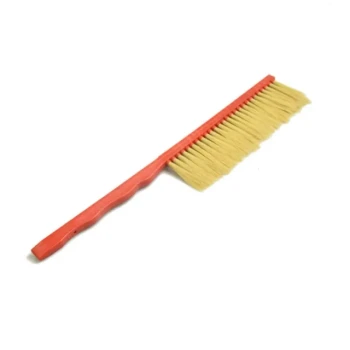The standard and most recommended advice is to start with two beehives. While it might seem like more work or a larger initial investment, managing two hives is often significantly easier and more successful for a new beekeeper than managing just one. Having a second colony provides you with invaluable resources to solve common problems that a single, isolated hive cannot overcome on its own.
Starting with two hives transforms beekeeping from managing a single, isolated colony to overseeing an interconnected system. The second hive is not just a backup; it is a built-in toolkit of resources that can save a struggling colony and dramatically accelerate your learning.

The Strategic Advantage of a Second Hive
Thinking of a second hive as a resource rather than a burden is the key mindset shift. When one hive encounters a problem, the other often holds the solution.
Solving Queen Problems
A hive cannot survive without a productive queen. If a queen dies, fails, or goes missing (a common issue), a single hive is often doomed.
With two hives, you have a simple solution. You can transfer a frame containing eggs and young larvae from the queen-right colony to the queenless one. The bees in the queenless hive will use these resources to raise a new emergency queen, saving the colony.
Balancing Colony Strength
It's common for one hive to be stronger or build up faster than another. A weak hive may struggle to regulate its temperature, defend against pests, or gather enough resources.
By having a strong hive nearby, you can "borrow" a frame of capped brood (developing bees) and give it to the weaker colony. This infusion of new bees provides an immediate population boost, helping the weaker colony catch up and thrive.
Comparative Learning and Diagnostics
For a beginner, one of the hardest questions is: "Is my hive behaving normally?" With only one hive, you have no point of reference.
With two hives side-by-side, you can compare their behavior, population levels, and temperament. If one is suddenly much less active or more aggressive than the other, it's a clear signal to investigate for a specific problem. This comparative model is one of the most powerful learning tools in beekeeping.
Understanding the Trade-offs and Realities
While starting with two hives is the overwhelming recommendation, it's important to understand the full context.
The Single-Hive Challenge
It is possible to start with just one hive. However, you are operating without a safety net.
If you choose this path, your chances of success increase dramatically if you have a local mentor or beekeeping friend who is willing to provide you with a frame of eggs or brood should you need it. Without this external support, a single mistake or stroke of bad luck can end your beekeeping journey before it truly begins.
The Upfront Investment
The most significant argument against starting with two hives is cost. You will need to purchase two sets of hive equipment (boxes, frames, etc.) and two packages or nucs of bees.
While this initial investment is higher, it is often seen as insurance. Losing your single hive and having to start over from scratch the following year is ultimately more costly and discouraging.
Logistical Convenience
On a practical note, many bee suppliers ship packages of bees in pairs. This logistical reality often aligns with the best-practice advice of starting with two colonies from the beginning.
Making the Right Choice for Your First Year
Your decision should be based on your primary goal for starting this journey.
- If your primary focus is maximizing your chance of success and learning as much as possible: Start with two hives to provide a built-in support system for your bees and an invaluable comparative learning tool for yourself.
- If your primary focus is minimizing initial cost while accepting a higher risk: You can start with one hive, but only if you have secured a local mentor who has agreed to help you with resources in an emergency.
Ultimately, your first year is about giving your bees the best possible chance to thrive, and giving yourself the best possible chance to learn.
Summary Table:
| Starting Option | Key Advantage | Main Challenge | Best For |
|---|---|---|---|
| Two Hives | Built-in resource sharing, comparative learning, higher success rate | Higher initial investment | Maximizing success and accelerating learning |
| One Hive | Lower upfront cost | No safety net, higher risk of colony failure | Minimalists with a local mentor for support |
Ready to set up your apiary for success?
As a new beekeeper, having the right equipment from the start is crucial. At HONESTBEE, we specialize in supplying commercial apiaries and beekeeping equipment distributors with high-quality, durable beekeeping supplies through our wholesale-focused operations.
Whether you're starting with one hive or two, we provide the reliable foundation your bees need to thrive. Our equipment helps you:
- Build strong colonies with durable hive components
- Manage your apiary efficiently with professional-grade tools
- Scale your operation with wholesale pricing advantages
Let us help you build a thriving beekeeping business. Contact our wholesale team today to discuss your equipment needs and pricing options.
Visual Guide

Related Products
- Professional Drop-Style Hive Handles for Beekeeping
- Professional Galvanized Hive Strap with Secure Locking Buckle for Beekeeping
- No Grafting Queen Rearing Kit: System for Royal Jelly Production and Queen Rearing
- Plastic Handle Single Row Artificial Fiber Bee Brush
- Nicot Queen Rearing Kit for Beekeeping and Grafting in Nicot System
People Also Ask
- Why are hive tools painted in bright colors? Prevent Losing Your Essential Beekeeping Gear
- Why is proper beekeeping equipment important? Essential for Safety and Hive Health
- What are the characteristics of the bristles on a bee brush? Designed for Gentle Persuasion, Not Force
- What types of gloves are available for beekeeping? Choose the Right Protection for Your Hive
- What is beekeeping equipment? Essential Tools for Commercial Apiaries & Distributors



















